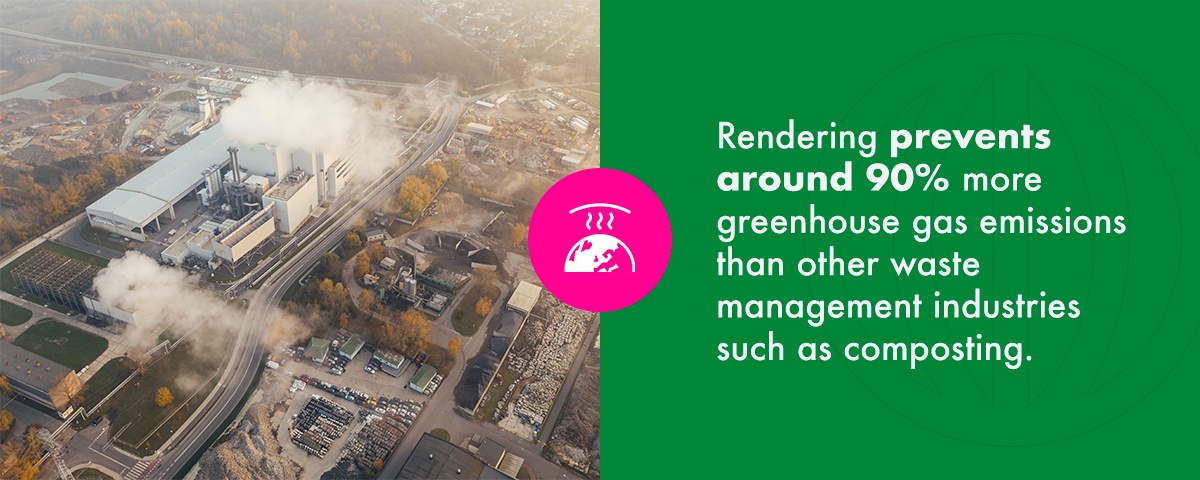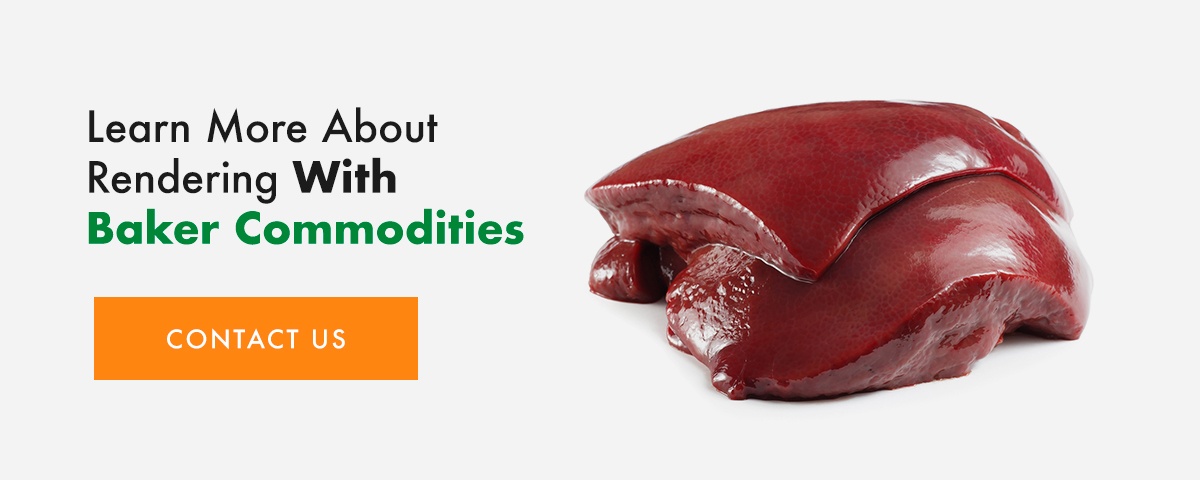When Will Rendering Be Eligible for Carbon Credits?
The rendering industry generates products from reusable materials with low economic value, helping reduce industrial wastes by recycling organic by-products. The many business advantages and the positive impacts on the environment are appealing for companies seeking to use a reliable method of reducing their projects’ carbon footprints.
Rendering has already been shown to improve water and air quality by reducing the amount of waste materials leftover from livestock and meat processing. These animal by-products typically go to landfills or wastewater treatment facilities, where they continue to produce greenhouse gas (GHG) emissions. NARA (North American Renderers Association) recently recommended that the USDA consider rendering for Carbon Credit eligibility. Adopters of this industry should be eligible for Carbon Credits along with food and livestock processors who have started participating in more eco-friendly agriculture methods.
What Are Carbon Credits?
A Carbon Credit is a type of permit. Each Carbon Credit allows a company the right to emit greenhouse gases in exchange for helping to limit their production of pollutants or other potentially harmful materials by one metric tonne. Greenhouse gases emitted as by-products of industrial processes may include carbon dioxide, methane gas, hydrofluorocarbons, nitrous oxide and others. A Carbon Credit is considered a tradable certificate that a company purchases after successfully reducing its GHG.
The federal government allows one Carbon Credit for each metric tonne of greenhouse gases that are reduced or destroyed during a project’s production processes. Carbon Credits are mainly issued to green companies like biodiesel producers or recycling firms. The amount is determined through verification that a project has eliminated the required amount of greenhouse gases. Companies that successfully offset GHG emissions receive Carbon Credits in exchange for their efforts to engage in environmentally conscious business practices.
These Credits are then sold to other companies that require them as evidence of offsetting their emissions. A company earns Carbon Credits by either being assigned a certain number for reducing their GHGs or by purchasing them from the companies that produce them while recycling or sequestering GHGs.
The benefits of receiving Carbon Credits are many. Carbon-negative companies have achieved a net carbon footprint of less than zero by eliminating more gasses than they produce. Earned Carbon Credits can be resold to companies that are working toward being carbon negative, giving them a status of carbon neutral. This allows the industry to make efforts toward maintaining a healthy ecosystem while also offsetting the costs of doing green business and gaining a reputation for being eco-friendly and environmentally conscious.
What Determines Carbon Credit Eligibility?
The agricultural and forestry industries purchase Carbon Credits in high frequency, but any project that can reliably reduce greenhouse gas emissions is eligible for Carbon Credits. The most important factor in determining whether rendering technology is eligible for Carbon Credits is evidence supporting that the processes used can effectively reduce greenhouse gases and that these results can be replicated.
As the pool of evidence grows in support of the benefits of rendering for the environment, more industries have begun to rely on rendering plants to reduce the accumulation of wastes from their projects. Animal rendering generates useful products from scrap materials that would otherwise end up in landfills or wastewater, but using a process that reduces greenhouse gases is the main criteria for earning Carbon Credits. Other important factors are:
- How a method for reducing carbon footprints impacts the private sector.
- How the method impacts the state compliance markets for offsetting carbon gas.
- What the scope of the method is, including whether its terms for the required geography, scale and focus apply broadly.
Increasing eco-friendly recycling methods results in Carbon Credits only when the level of greenhouse gases is affected. The changes must have a measurable impact with a process that is reasonable to repeat and achieves consistent results. The USDA analyzes peer-reviewed research into the process and decides whether to provide clearance.
How Does Rendering Reduce Greenhouse Gas Emissions?

When certain animal by-products are disposed of instead of being recycled, they emit greenhouse gases in large volumes as they decompose. The decomposition of unused animal by-products in landfills leads to poor air quality and the spread of wastewater runoff rich in nitrates and other harmful chemicals.
According to NARA, rendering prevents around 90% more greenhouse gas emissions than other waste management industries such as composting. NARA also found that rendering limits up to five times the amount of greenhouse gases than its projects emit, with the total reduction in greenhouse gases being worth about the same as the emissions of 18.5 million passenger vehicles. Rendering contributes significantly to reducing the carbon footprint based on these findings.
What Will It Take for Renderers to Earn Carbon Credits?
The process of rendering unwanted by-products is regenerative and easy to sustain. Rendering works to resolve common problems with the food industry, such as how many inedible, organic by-products become waste. Animal matter such as organs, bones, hides and fat can be rendered into affordable supplies for new industrial products. Rendering is a commercially viable industry with many benefits apart from lowering greenhouse emissions, including:
- The market is sustainable and avoids virgin materials that are already high in value.
- The end result is the formation of environmentally safe products.
- Waste from other industries is recycled rather than left to pollute the environment.
Rendering plants benefit the environment, but proponents are pushing for Carbon Credits by supporting the growing research that carbon emissions are much lower when companies employ these procedures. Data connected to the carbon footprint has increased over the last decade alone. Renderers and companies who rely on these services must prove that their specific rendering processes are carbon negative and can reduce greenhouse gas emissions to earn Carbon Credits.
How Can Rendering Lead to a Carbon Negative Industry?
Replacing products that are less environmentally friendly with rendered goods of equivalent or superior quality could help lower a company’s carbon footprint. The company would have to find an appropriate replacement for their supplies and locate a rendering company to send its by-products to, depending on the specific industry. With more eco-friendly and climate-smart products available in recent years, companies can find efficient ways to reduce their carbon footprint.
What Rendering Products Can Lower Carbon Footprints?
Valuable products that help companies lower their carbon footprints include:
- Tallow, which can be rendered from animal fats to make soaps, lubricants, paints, varnishes, biofuel and other products.
- Hide-based clothing or rugs from recycled animal skins.
- Fertilizers and animal feed produced from animal parts, blood and organ meat.
Learn More About Rendering With Baker Commodities
As a carbon-negative company of our own accord, Baker Commodities is committed to providing our customers with inside information about the rendering industry and the products it produces. Many companies routinely rely on rendering methods to offset their surplus of animal waste, and the rendering techniques we employ output new products you can purchase for your business or for personal use.
Are you looking for high-quality supplies made through rendering? Contact us to learn more about rendering services or inquire about where to purchase a specific product.




